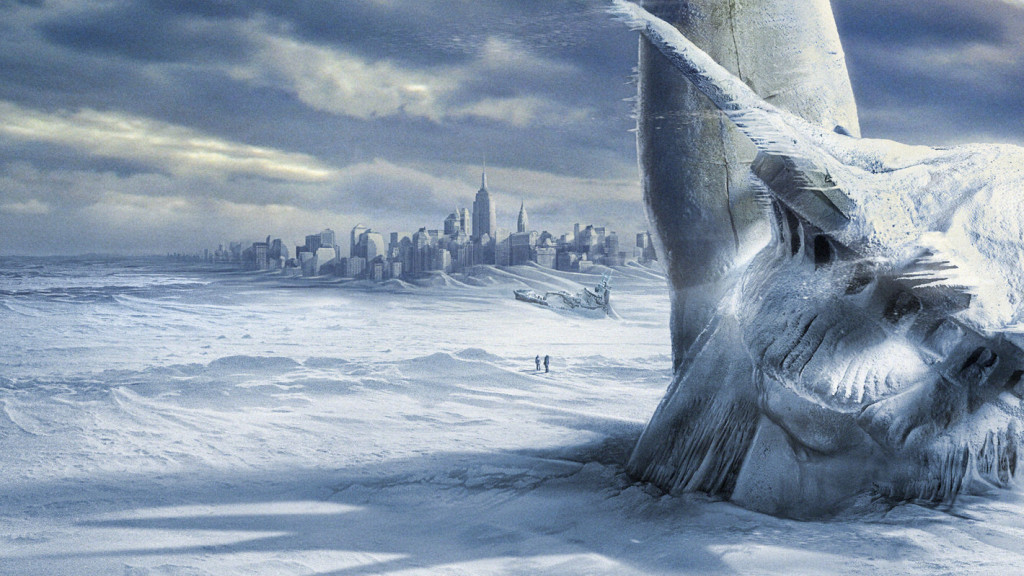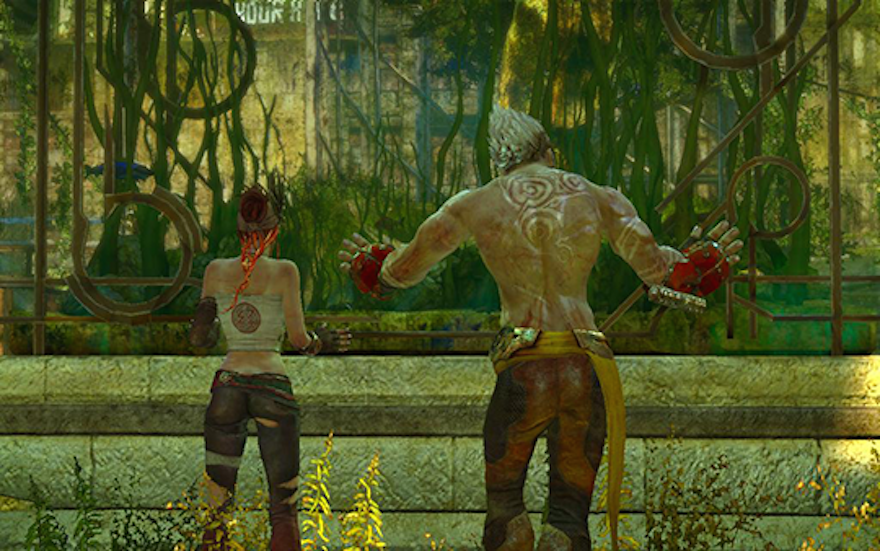Right now, Paris is hosting the United Nations conference on climate change. It’s the 21st session to be held since these events started, and the 11th meeting since the Kyoto Protocol was agreed in 1997. These events tend to be underwhelming—a smattering of watery half-promises and spurious statistics—but this year there’s increased scrutiny following the global protests of last September. Three hundred thousand people took to the streets of New York while concurrent marches were being held across cities such as Berlin, Lagos, Johannesburg, Seoul, and London. And this November, the United Nations weather agency warned of the new “permanent reality” we have entered, as CO2 in the atmosphere hit a record high, up 43% from pre-industrial times. We can expect extreme weather events to become increasingly commonplace: heatwaves, flash floods, and rising sea levels—all with greater frequency and severity.
What role does art have to play in our response to this new reality? Writers, artists and film-makers have long been engaged with environmental issues. Romanticism, in the 19th century, was conceived partly as a reaction to the rise of industrialism and the environmental destruction that accompanied these developments. The poet John Keats rhapsodized about the beauty of the natural world, infusing it with notions of the sublime, and the painter Hans Gude gave us the untouched picaresques of his native Norway. And, since the mid 90’s, filmmakers have attempted to formulate responses to the specific issues of melting ice-caps, climate change, and increasing CO2 emissions, albeit with a silliness and scale special to Hollywood. Waterworld cast a spectacularly unsuccessful look at a future in which rising sea levels wiped out landed civilization, and The Day After Tomorrow took hokey science to its destructive limits, decimating New York in the process.

Nature writing, too, has come to play an important role in documenting our environmental anxieties. In 1986 Barry Lopez published a classic of the genre called Arctic Dreams. His was a book that brought together the natural sciences—the biology, geography, and geology of the region—with anthropological analysis and cultural history. And his poetic lyricism conveyed a deep respect for the environment, animals, and people of the Arctic. Lopez’s examination of the Arctic began with the aesthetic but always tended towards the ethical, a kind of moral gaze, as fellow nature writer Robert Macfarlane described it. And central to that moral gaze is the idea that our evaluation of a landscape, be it physical, cultural, or otherwise, is shaped by a human desire to put it to use.
Landscapes in videogames are always put to use—they are digital constructs, fabricated realities that provide a framework for the player to interact with and within. These landscapes are an integral part of narrative and message, and their presentations are vehicles for the implicit and explicit assumptions of their creators. But it’s not only aesthetics that help us piece together the relationship videogames have with environmental issues, it’s their use and utility.
Videogames, to a large extent, are disinterested in the real-world issues of energy, consumption, and the environment. Depictions of warfare dominate many popular videogames—megahits like Call of Duty, Battlefield, and Destiny lock the player into a perpetual grind of combat, a seemingly infinite campaign of destruction, production, and reconstruction. And the conflict portrayed in videogames, just as in real life, at best exudes an indifference—a shrug of the shoulders towards energy consumption—and at worst treats the environment with disregard and contempt. This contempt isn’t new, though. Strategy games like 1995’s Command and Conquer, and 1997’s Age of Empires, have long placed environmental exploitation at the heart of their experiences. Resource consumption was a pre-requisite for the player’s progress, their depletion integral to winning the game.
But the consumption of resources doesn’t always have to be at the expense of the environment. Lionhead’s Black and White, from 2001, allowed for a conservationist approach towards resource management. Forests could be managed, felled trees replaced, and growth encouraged through the use of a water miracle. Yet Black and White was not only conservationist but preservationist, too. It was morning; my villagers yawned and stretched as they left their homes, the sleep still in their eyes, and a flock of birds rushed through the settlement, their wings gleaming in the morning light. The early risers pointed, cheered, and stood gazing at this act of natural beauty. In their world the natural aesthetic is highly prized, and for my villagers the natural world provided opportunity for spiritual contemplation—it was a moment that allowed them to break out of the intensive resource management that dominates their lives.
There are other videogames which are gently preservationist in outlook, too. There’s a moment towards the start of 2010’s Enslaved where Trip, your partner throughout the game, stops for pause and examines the remains of the fish tank that you have just helped to destroy. She is distressed, upset, and laments the loss of life that has occurred through human interference. These fish are the first living animals she has seen for years—it was a closed, self-sustaining eco-system in a post-apocalyptic Earth where wild animals are a thing of the past, replaced now by robotic approximations of their forebears. She weeps and you, the player, reflect on your own destructive action. It’s a powerful moment rendered sensitively, and it serves as a stark reminder of what could be lost if current environmental issues are not addressed effectively. The visual design of Enslaved, too, is suffused with a message of ecological regeneration, its reclamation of urban spaces. Trees poke through the New York high-rise apartment blocks, and the red hue of aging leaves and poppies spread out across an overgrown sidewalk.

There’s no sense of ecological regeneration in 2015’s The Flame in the Flood. Its landscape is to be feared, not marvelled at. But it does a good job of making you feel comfortable, initially. There’s beauty in the quiet, and in the solitude; morning light shimmers in the water refracted through the spray of the rapids, the faded browns of autumn and lilting banjo are familiar, woven into the fabric of a homespun America. But the actuality of the experience quickly dispels these impressions. I encountered a wolf; Aesop, my dog, did little to stifle its advances—and the wolf inflicted numerous lacerations on my weary body. As I escaped the rain began to lash down, and the dark blue of night began to draw in, quicker than I needed. Hypothermia took hold as I reached my raft, and as morning broke, my body gave out—the flame extinguished. The Flame in the Flood, then, is a warning that life will be tough and it will be lonely, reminding us of what we stand to lose should environmental disaster hit. And whilst its title hints at a romantic take on disaster, the loneliness that sets in is anything but. It’s reminiscent of Cormac McCarthy’s The Road; as the father lay dying he told his son to keep carrying the fire—what fire replied the boy—the fire inside of you said the father. The bond is broken and the boy is alone—and it’s the scariest thing in the world.
But what else, aside from this moment of dawning isolation, makes The Road so scary, and how can it help us better understand The Flame in the Flood? Familiarity plays a crucial role in making the terror feel real. McCarthy lets the drama unfold in a recognizable landscape, the highways and intersections that unfurl across north-America, and the anonymous small towns that eke out an existence in this terrain. The disaster that has occurred is identifiable to anyone that has lived a winter in the north. Grey stretches into the infinite, the blackness of the forest silhouette cuts through the dull sunlight, and darkness consumes the river; days neither begin nor end during these months. Yet it’s not only familiarity that makes The Road’s disaster so chilling, it’s the vulnerability the father and son are subject to. They’re prey for the roaming gangs of cannibals that stalk the landscape, but more than this, they’re exposed to the worst a dying Earth can muster; the interminable cold and damp of the long dark winter. Father and son are surrounded, and dwarfed, by the rising coniferous trees that threaten to collapse at any moment, but whose fallen needles provide fleeting comfort during a night’s rest.
Familiarity and vulnerability are crucial to the horror of The Road, but together they instil a sense of urgency, and it’s this urgency that lies at the core of the environmental reading of the novel. It’s a scenario that is palpable, close to the bone, and it’s these feelings that The Flame in the Flood draws on so well. The flood imagery found throughout the game- submerged settlements and floating cars- is an increasingly common site on broadcast news; the “permanent reality” of extreme weather the United Nations warns of could have disastrous consequences sooner than we think. And the vulnerability of the player is placed at the forefront of the experience; this is not a situation you’ll be able to fight your way out of, or level-up your way through. There’s no hero narrative, no supernatural element, no zombie premise, and the lack of these aspects brings the reality of the situation into sharp relief. Both The Flame in the Flood and The Road ask the player and viewer, what’s more terrifying than dying in a global disaster; and the answer, emphatically, is surviving it.
Throughout all of these titles, designers have attempted to depict humanity’s attitude towards the environment, natural resources, and ecological disaster. Some present it beautifully, others morally, but these digital landscapes are always put to use, just as they are in the real world; our own foibles are always reflected in the screen. Ultimately, designers ensure that these issues are accounted for in videogames, just as they’ve been represented in the art, literature, and cinema of the past decades and centuries. And in the same way these art-forms have inspired thought, action, and in some instances change, so too can videogames make similar sorts of gains. The Flame in the Flood points towards this, allowing us to interact with the world we might be creating, placing future tribulations at the heart of its experience. Going forward, pre-civilization landscapes are beginning to be explored by titles such as Before and WiLD, offering us the potential to formulate a more meaningful relationship with the environment. Perhaps in these games we’ll get a second chance at history, or perhaps we’ll just get to make the same mistakes again.
